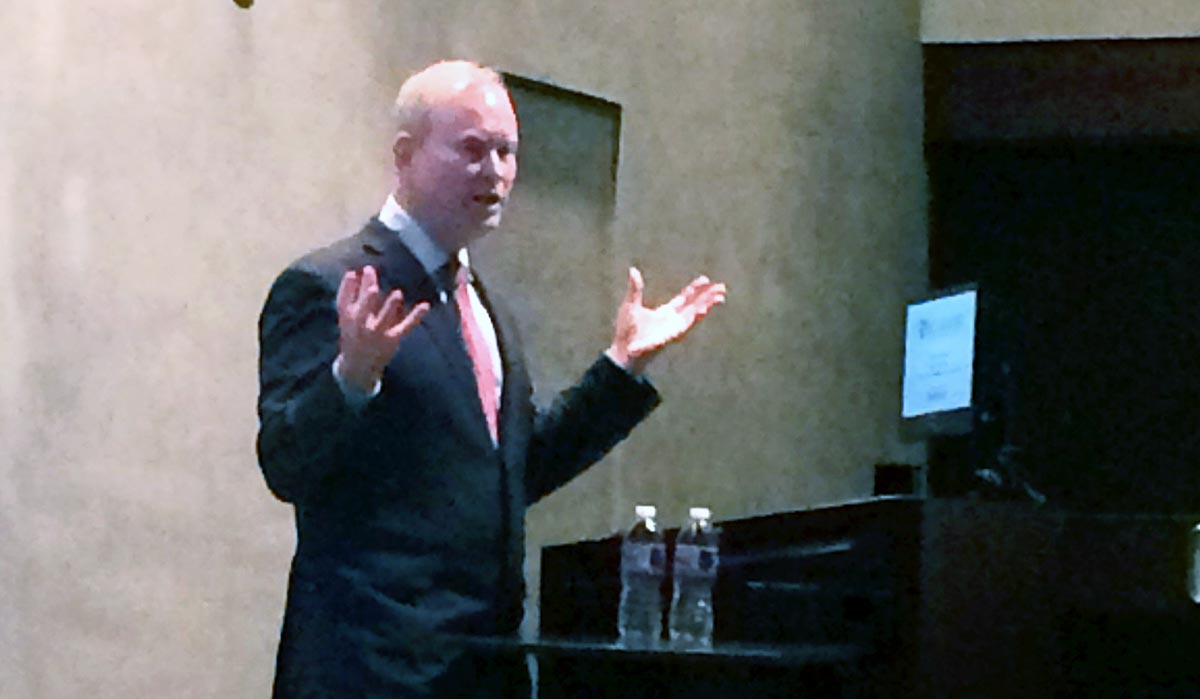When United Airlines opted against building a massive maintenance facility in Oklahoma City in 1991, it wasn't because of a lack of incentives.
The city was willing to pay millions of dollars to build the facility for United, as Mayor Mick Cornett tells the story, so long as the company brought thousands of jobs with it.
So when Oklahoma City lost out to Indianapolis, Oklahomans were shocked. And the reason United gave for skipping the city stung: the company couldn't imagine its employees actually wanting to live there.
That experience helped plant the seed for a new type of economic development in the minds of Oklahoma leaders, Cornett said.
"There had been a paradigm shift in economic development," Cornett explained, speaking at a Kinder Institute lecture Tuesday night at the Chase Auditorium in downtown Houston. "We had been acting under the impression that people would move to where the jobs were, and if we could attract the jobs, people would move to Oklahoma City."
"Turns out, people were living where they wanted to live," Cornett continued. "The jobs were going to where the people were."
Oklahoma City has taken that message to heart and has doubled down on its commitment to quality-of-life improvements. Today, that commitment is taking the form of a program dubbed MAPS 3, the latest version of a long-standing capital improvements effort that adds a one-cent sales tax within Oklahoma City.
From 2010 and 2017, the program is expected to raise $777 million to fund projects like a new downtown park, a street car line, new and improved sidewalks and bike trails, and a state-of-the art whitewater and rowing racecourse on the Oklahoma River.
Cornett also said the city is working to rectify previous design errors that resulted in a city totally focused on moving traffic efficiently - at the expense of pedestrians. "We had built a great quality of life if you happened to be a car," Cornett said. Those decisions contributed to an obesity problem within the city that is now being reversed as Oklahoma City works to prioritize walkability by designing smaller-scale streets downtown.
Cornett said part of the reason the city is thriving today, with an annual growth rate of about 2 percent, is that residents remember just how far they've come. In the 1980s and early 1990s, the banking crisis decimated the city's economy. And the area was dealt a gut-wrenching blow with the Oklahoma City bombing in 1995. Now that it's recovering, the city doesn't want to move backwards.
"We had always been so value-conscious that we allowed the quality of life to deteriorate," Cornett said. "Whatever was cheapest, that was the way … projects were funded. And we paid for it."
"Now what you see are higher and higher standards," Cornett continued. "I don't believe that you'll have businesses with high standards in a city with low standards."

